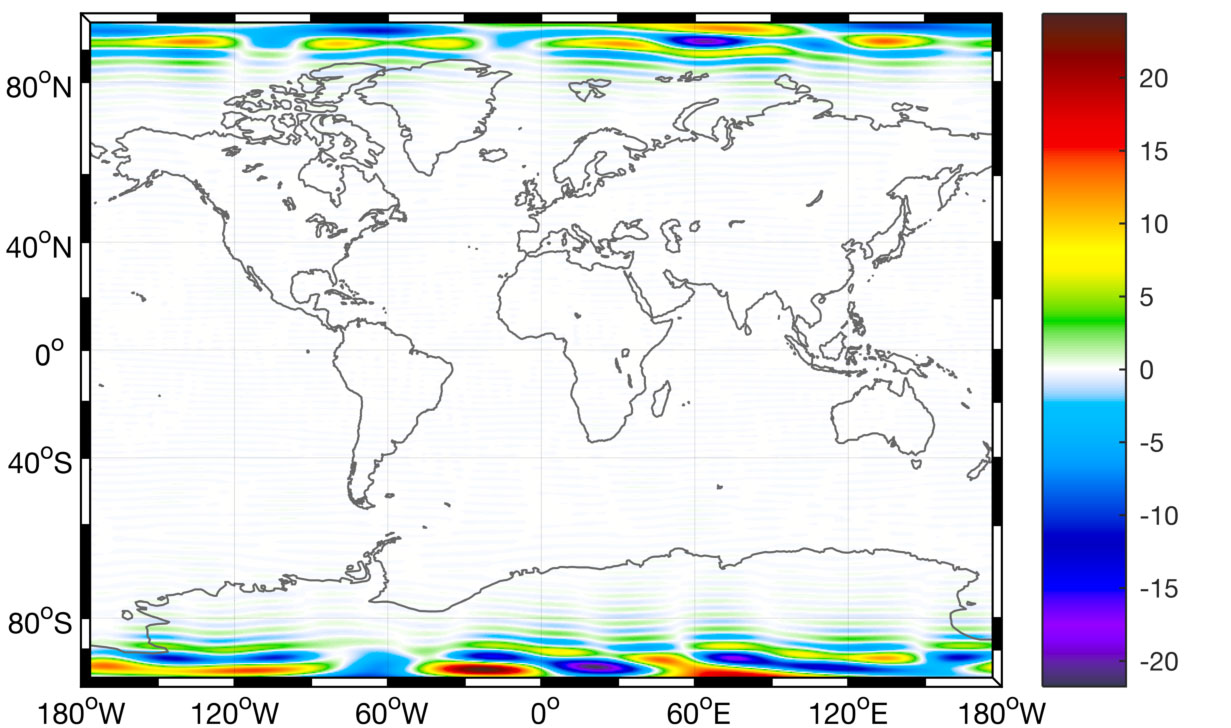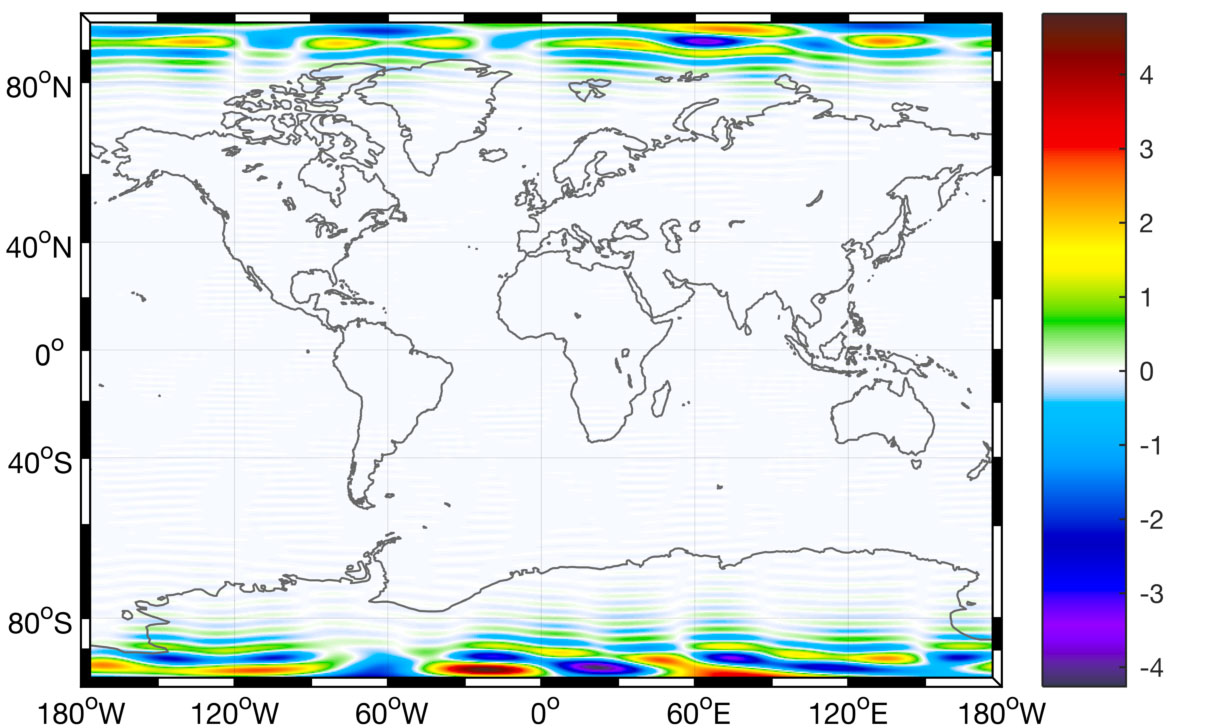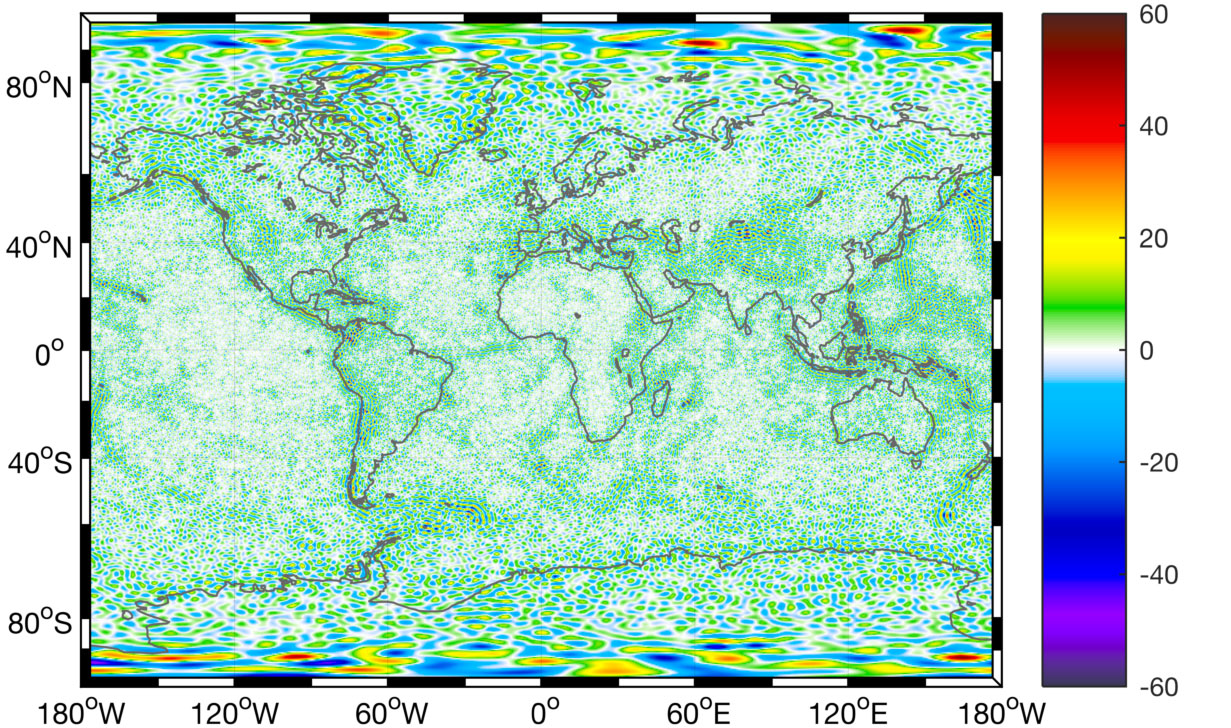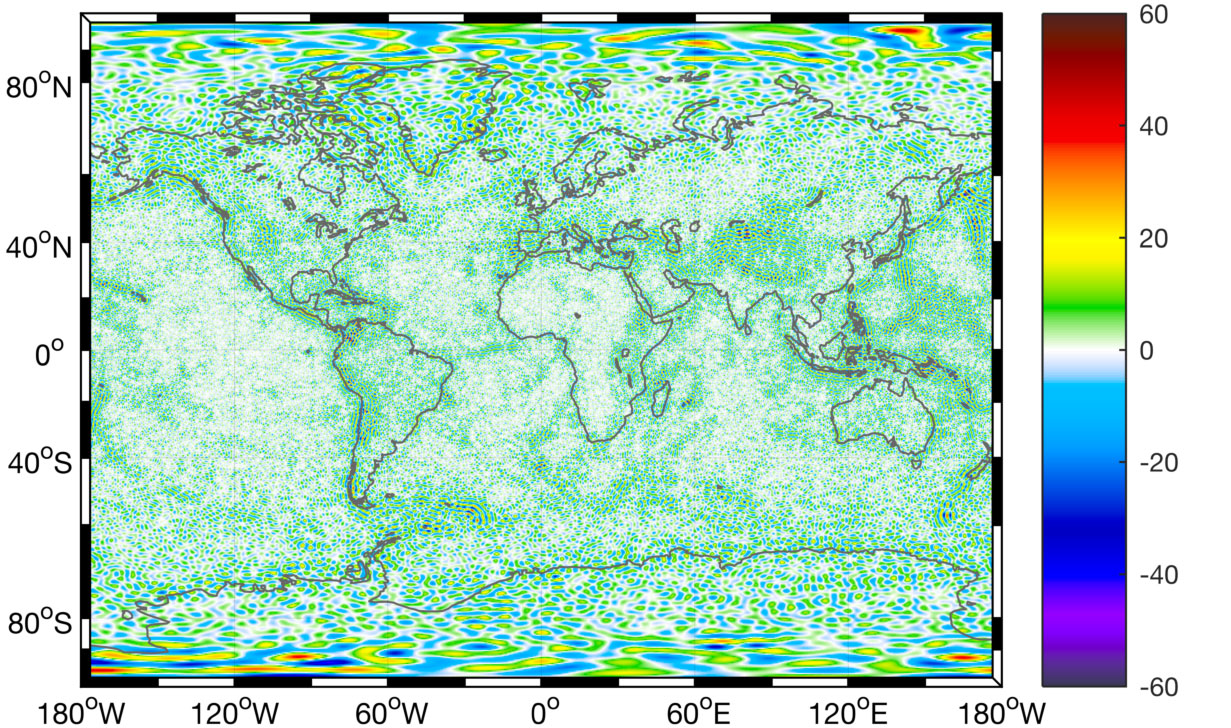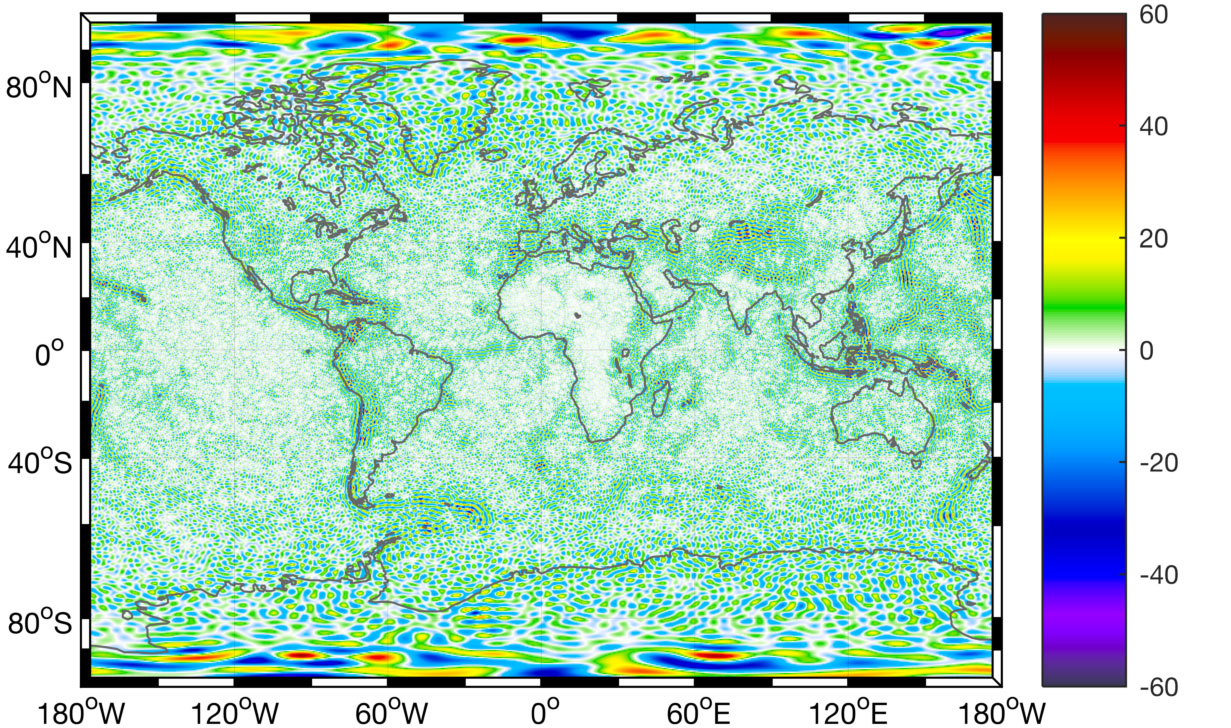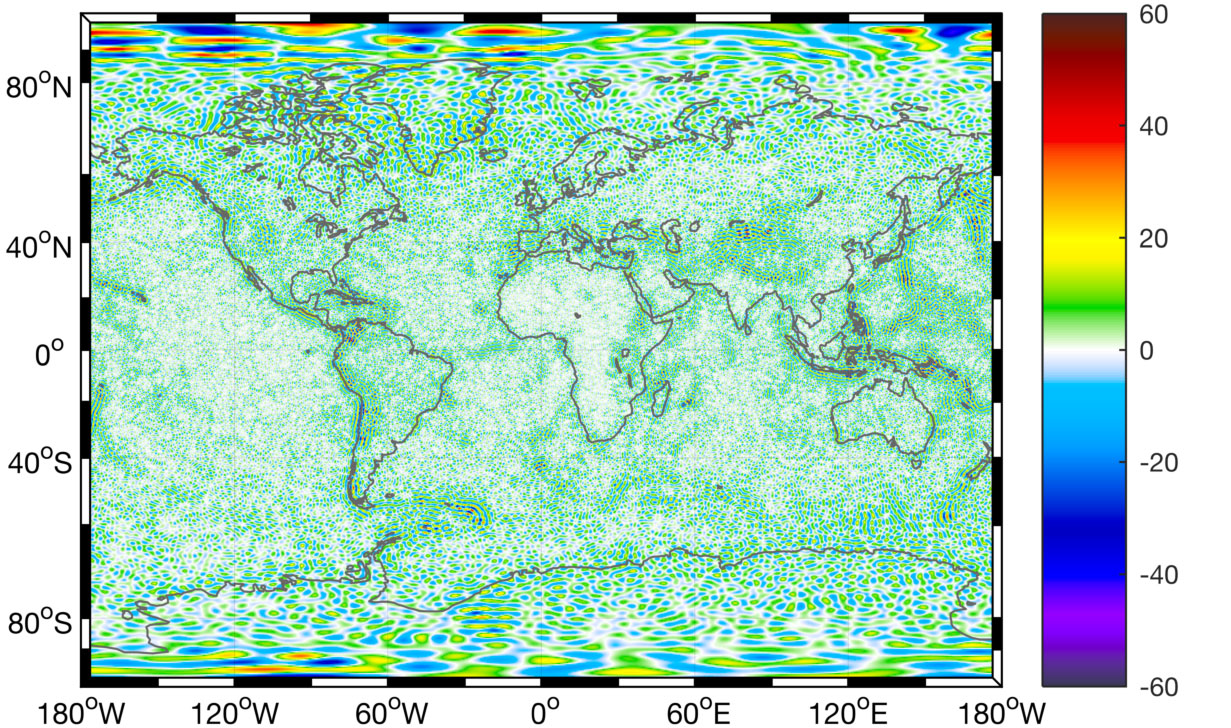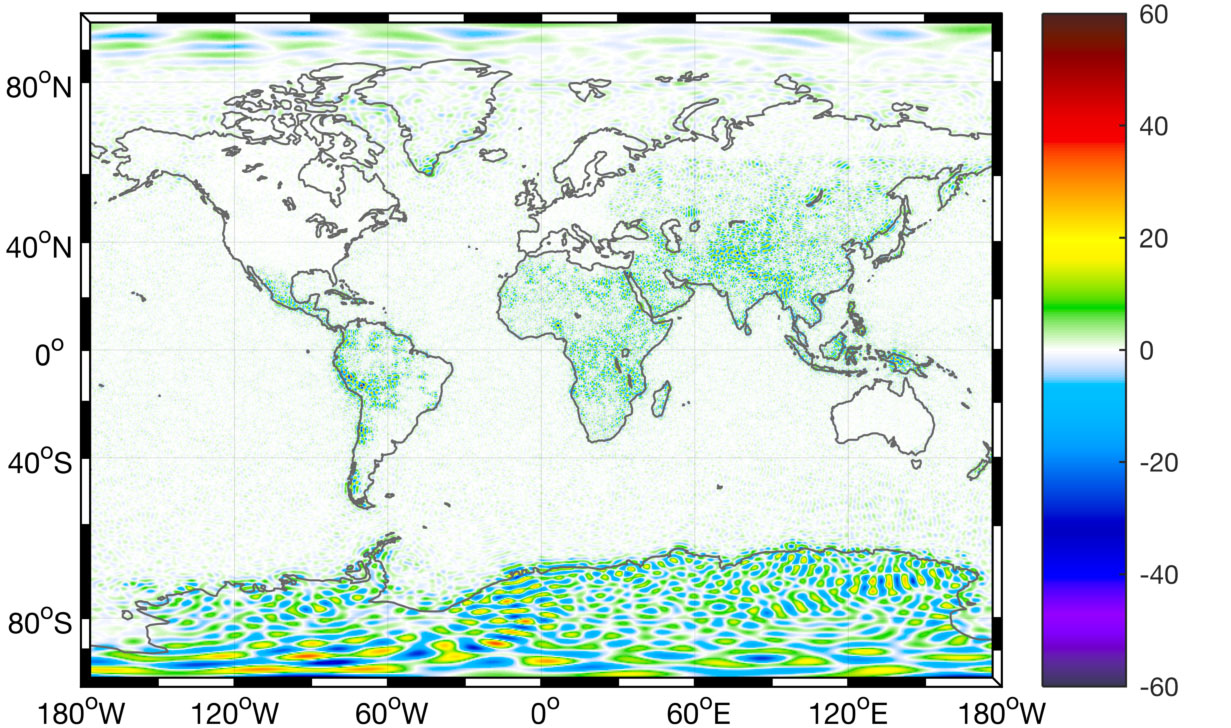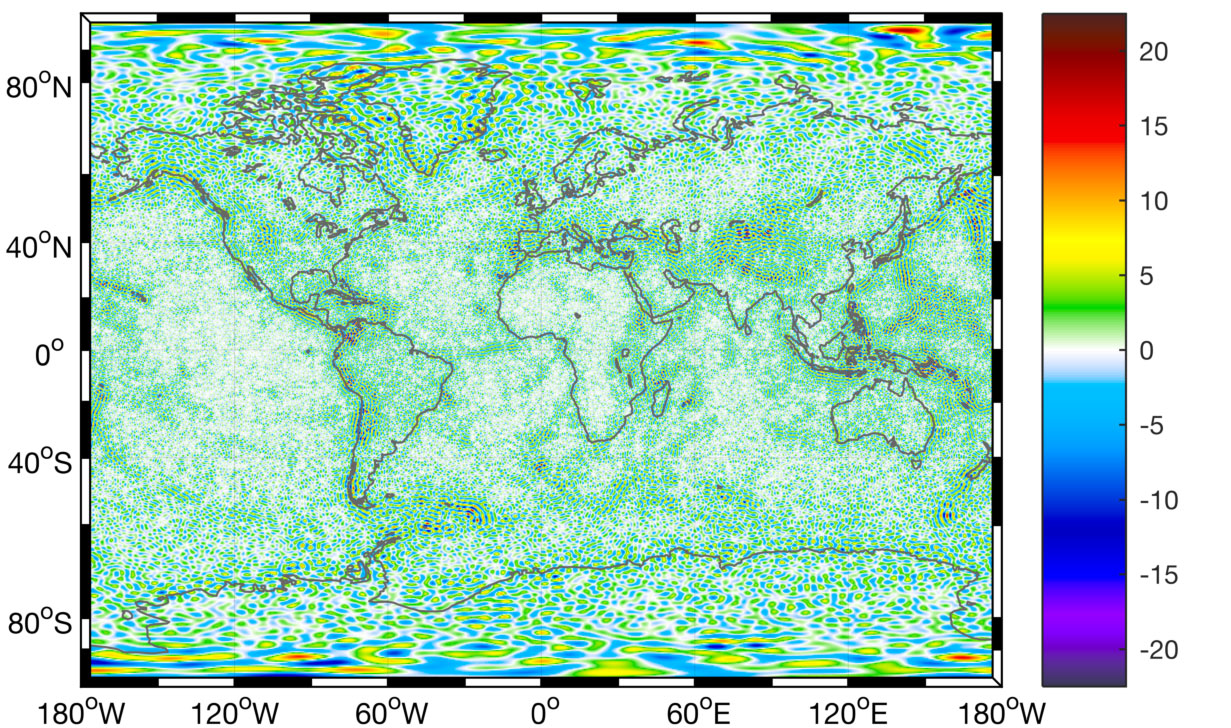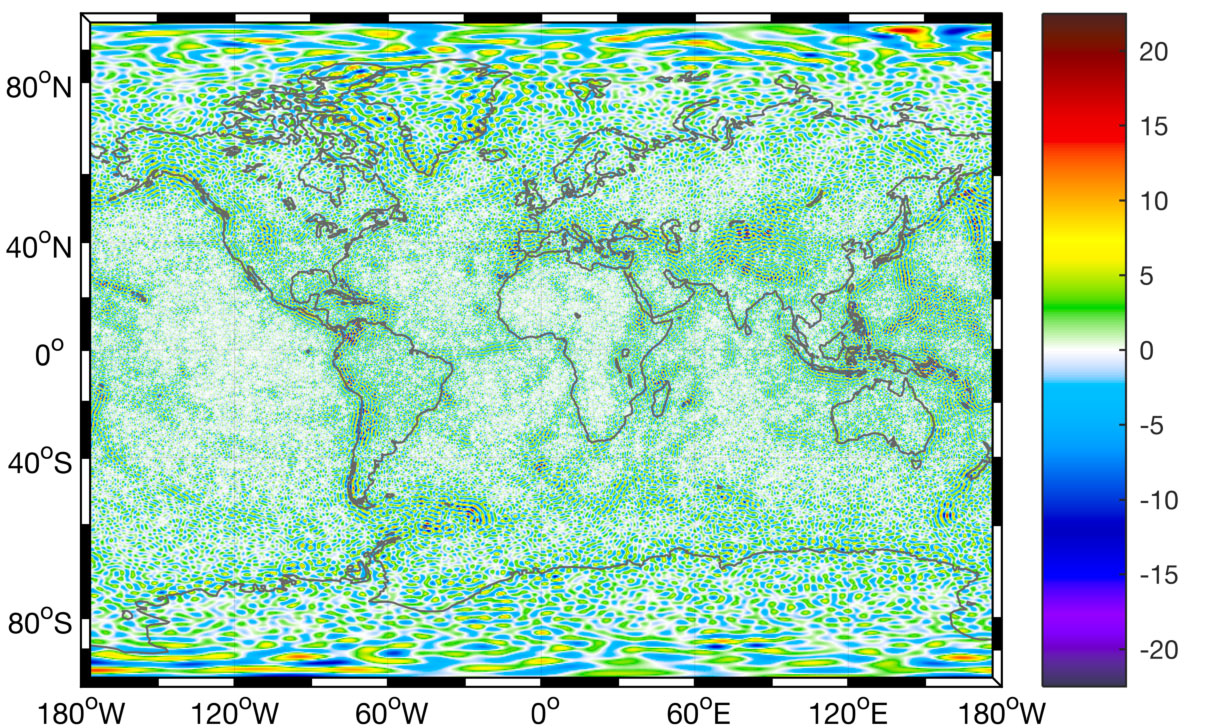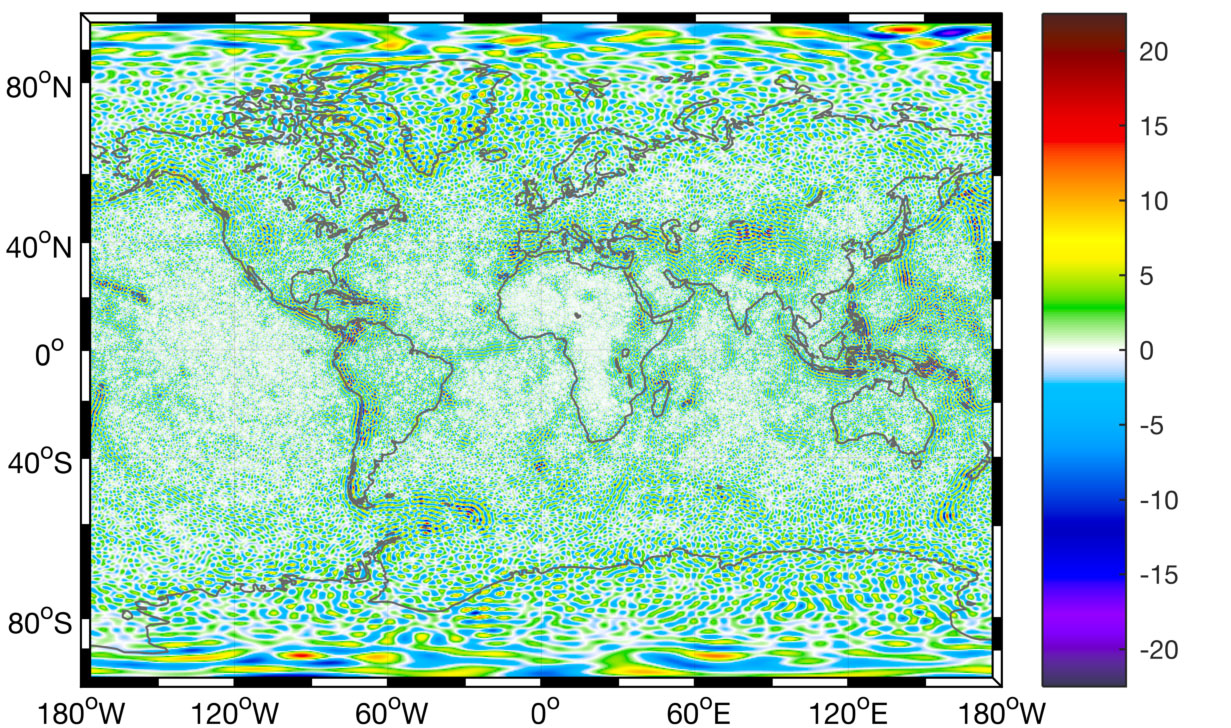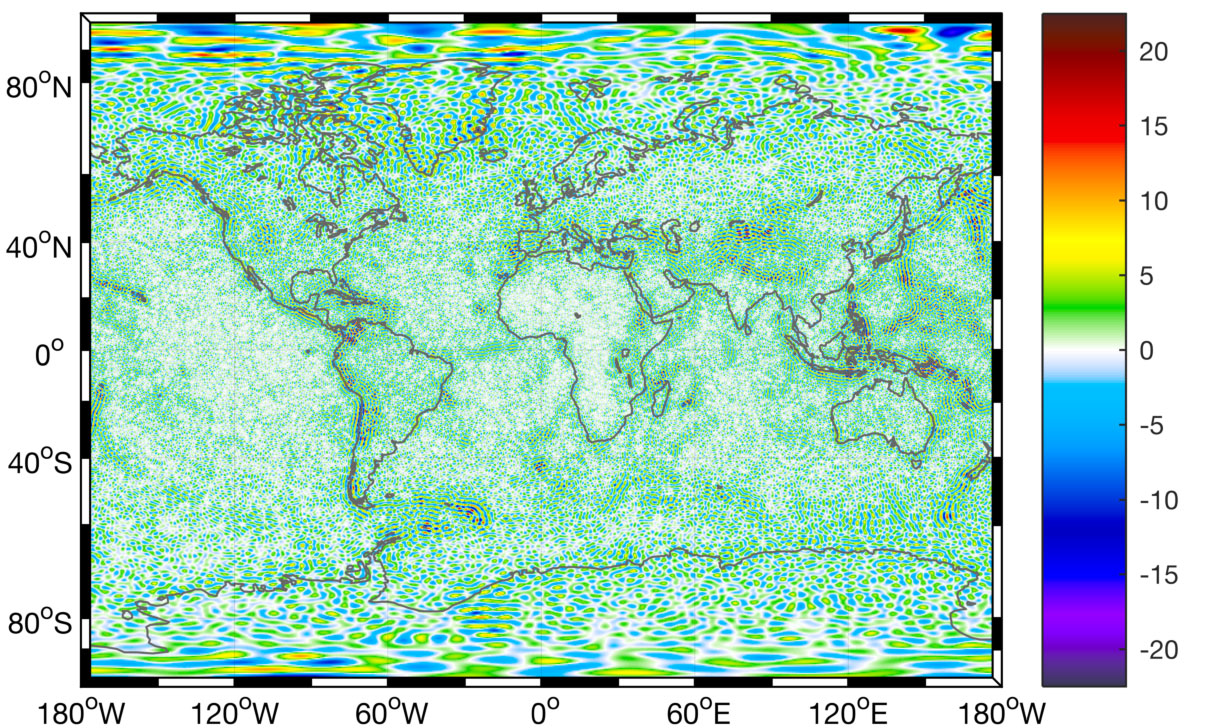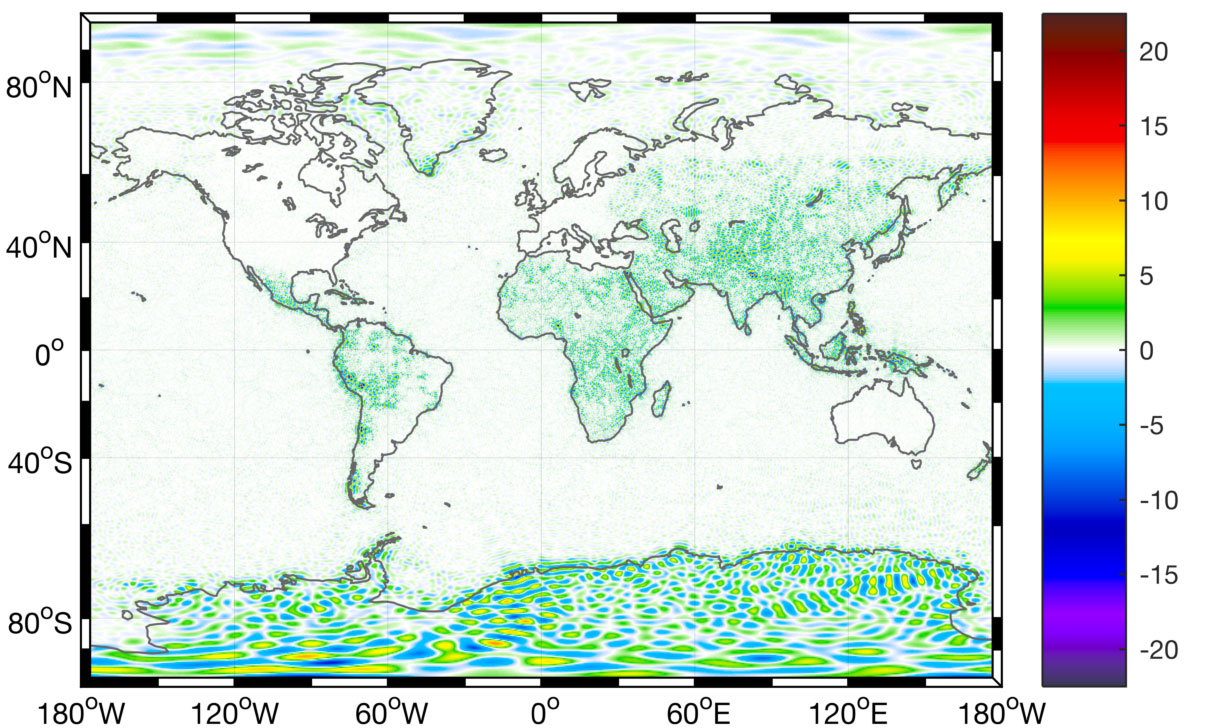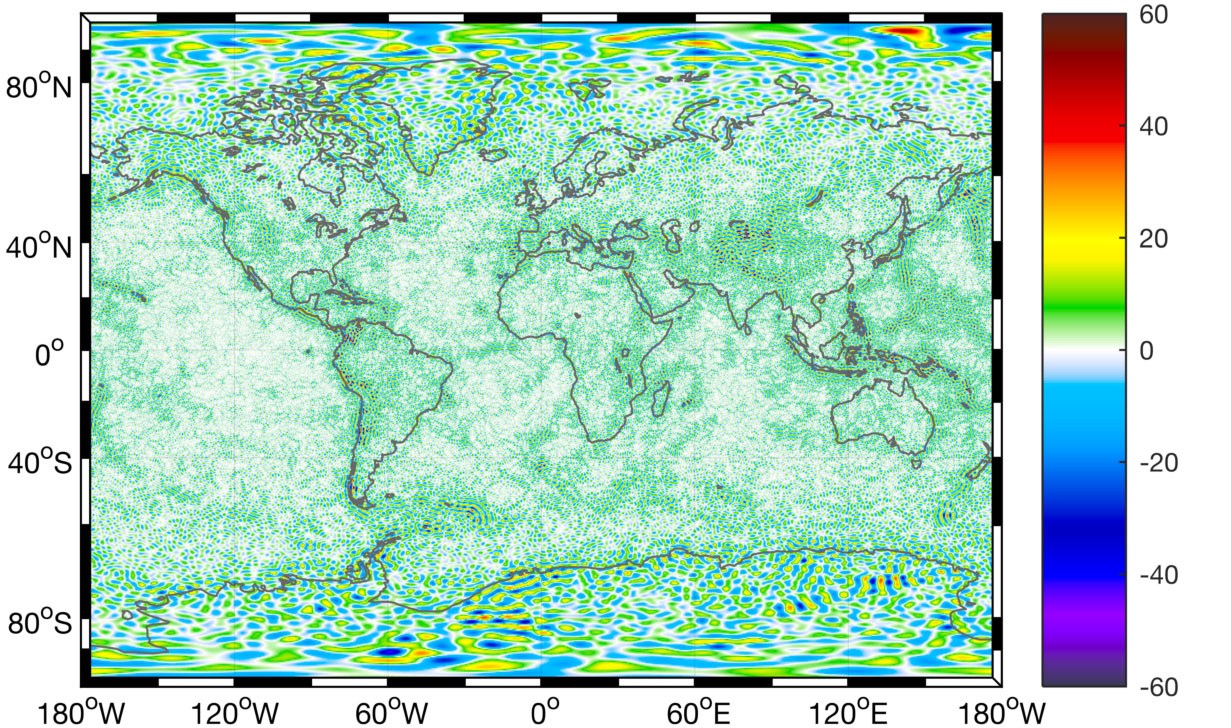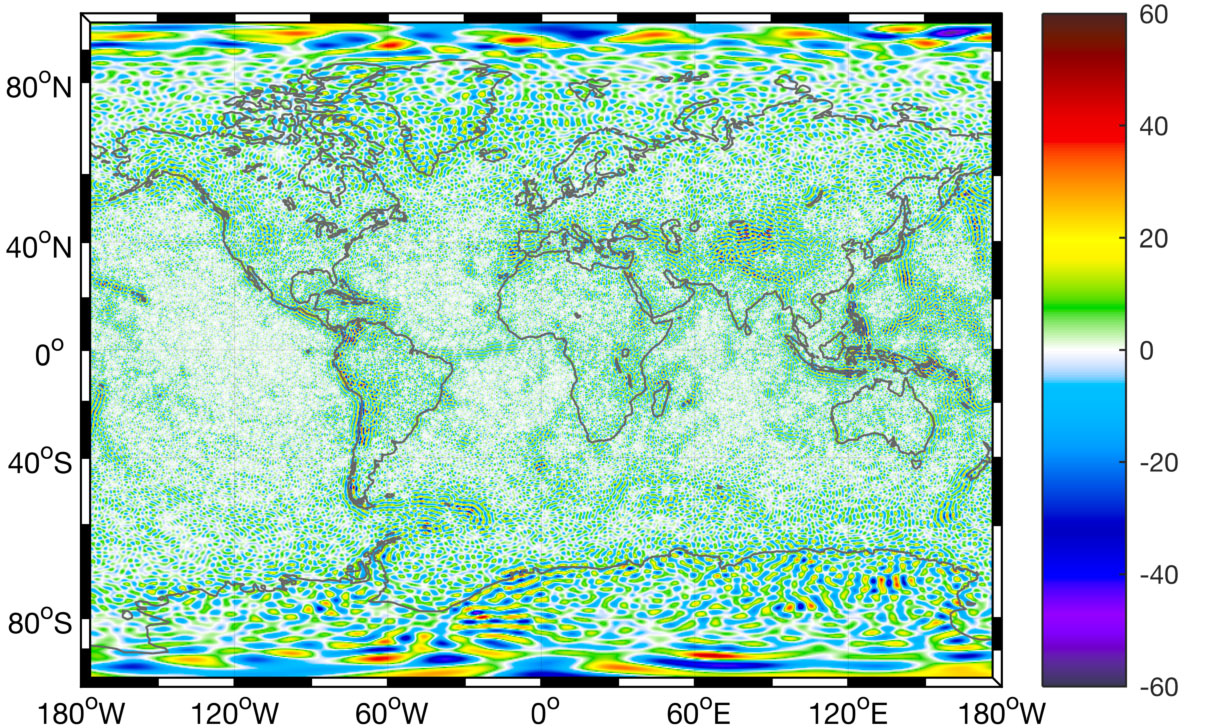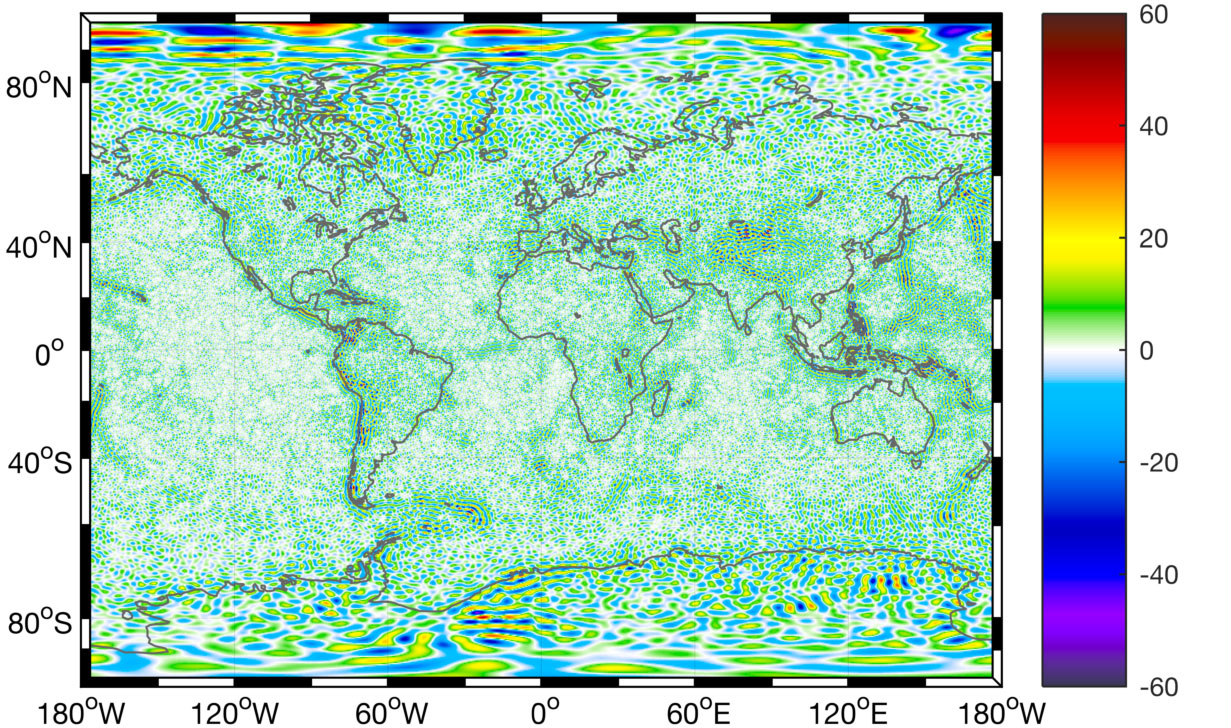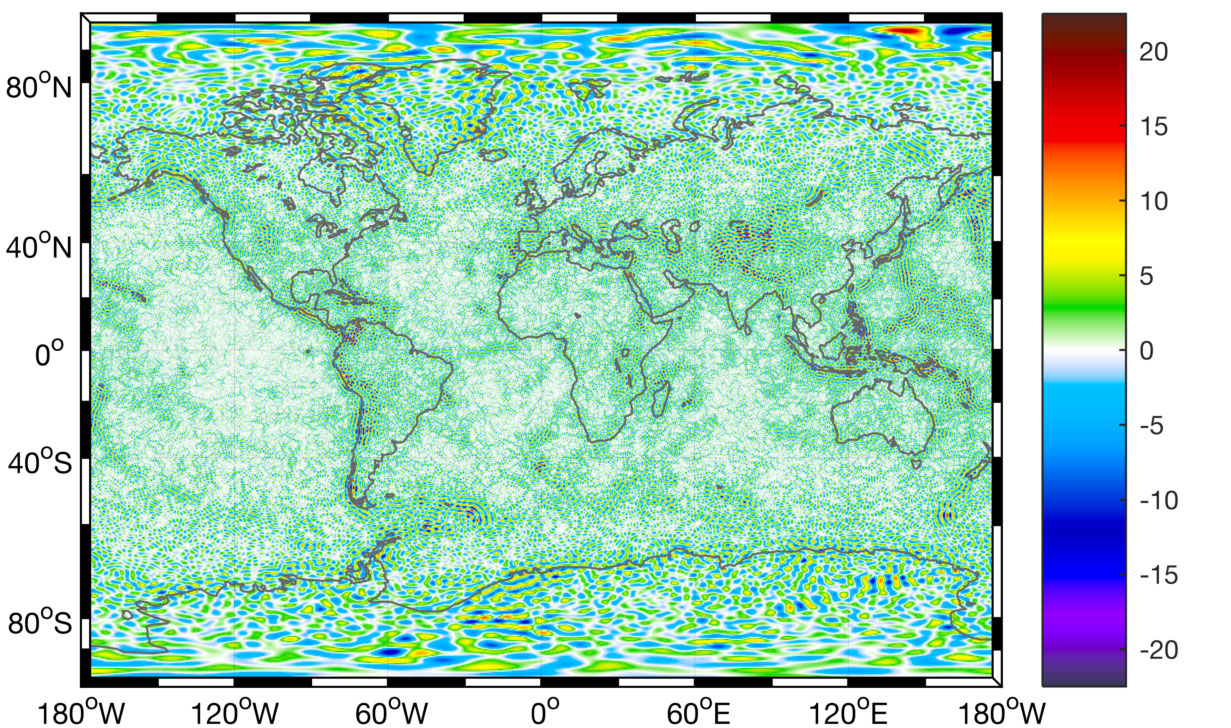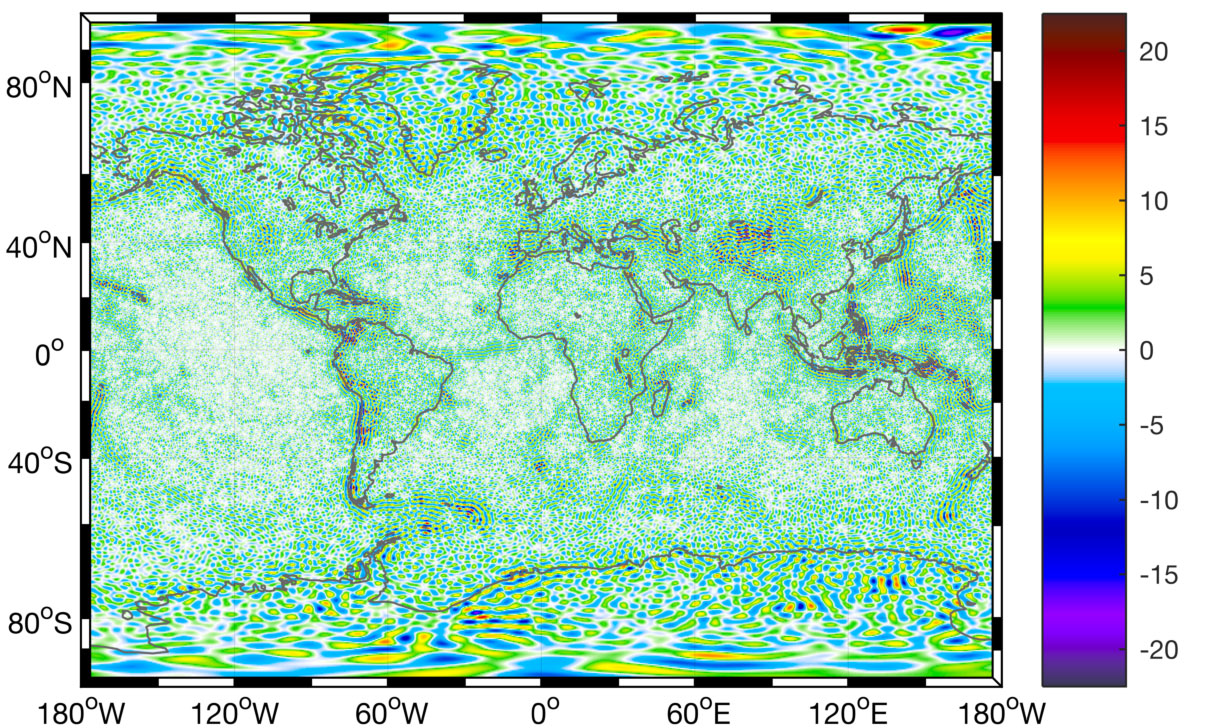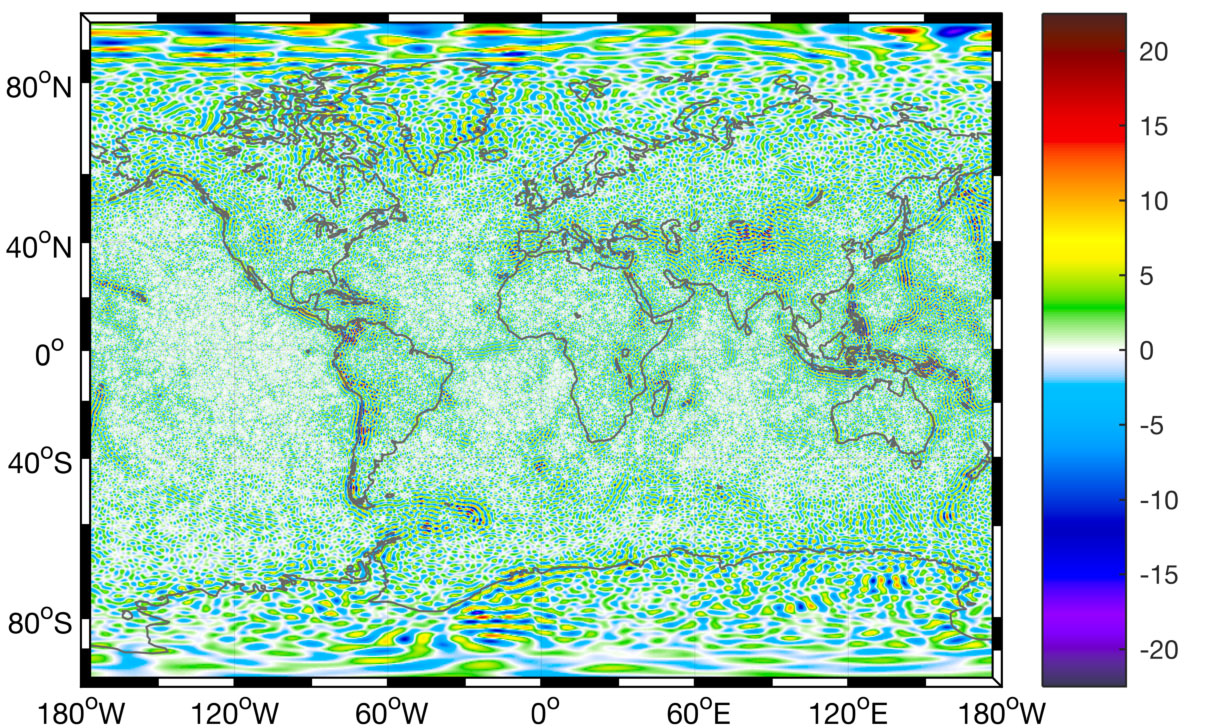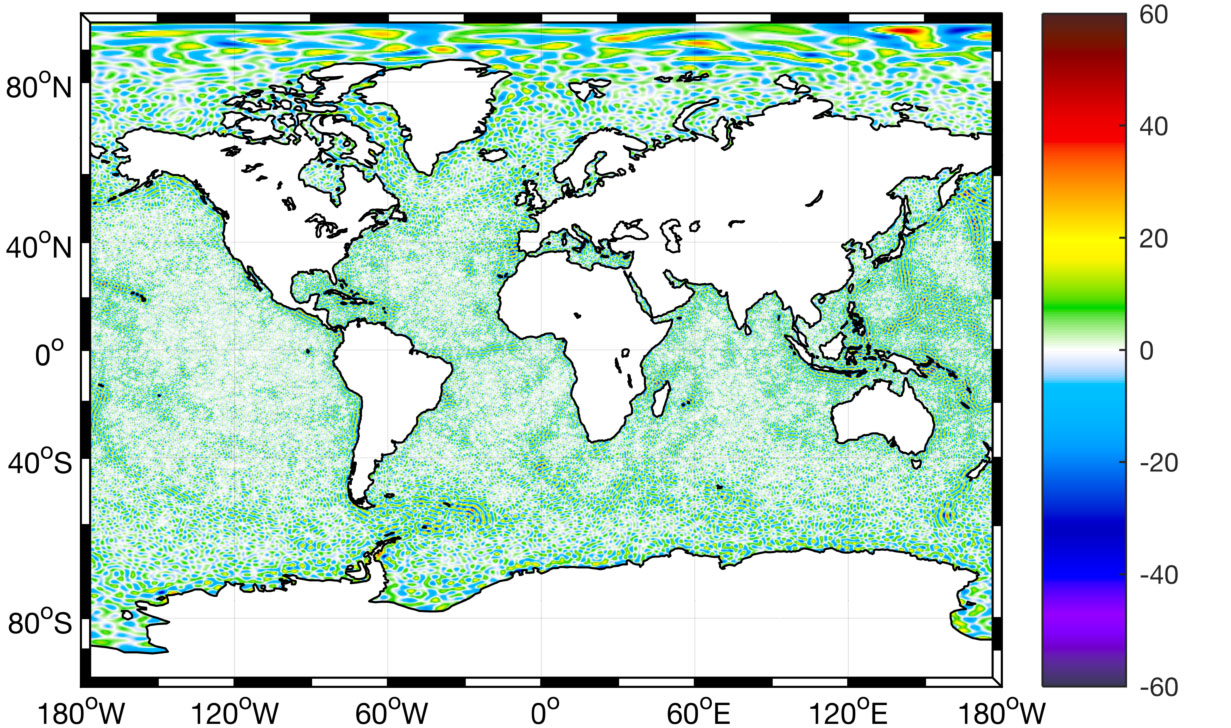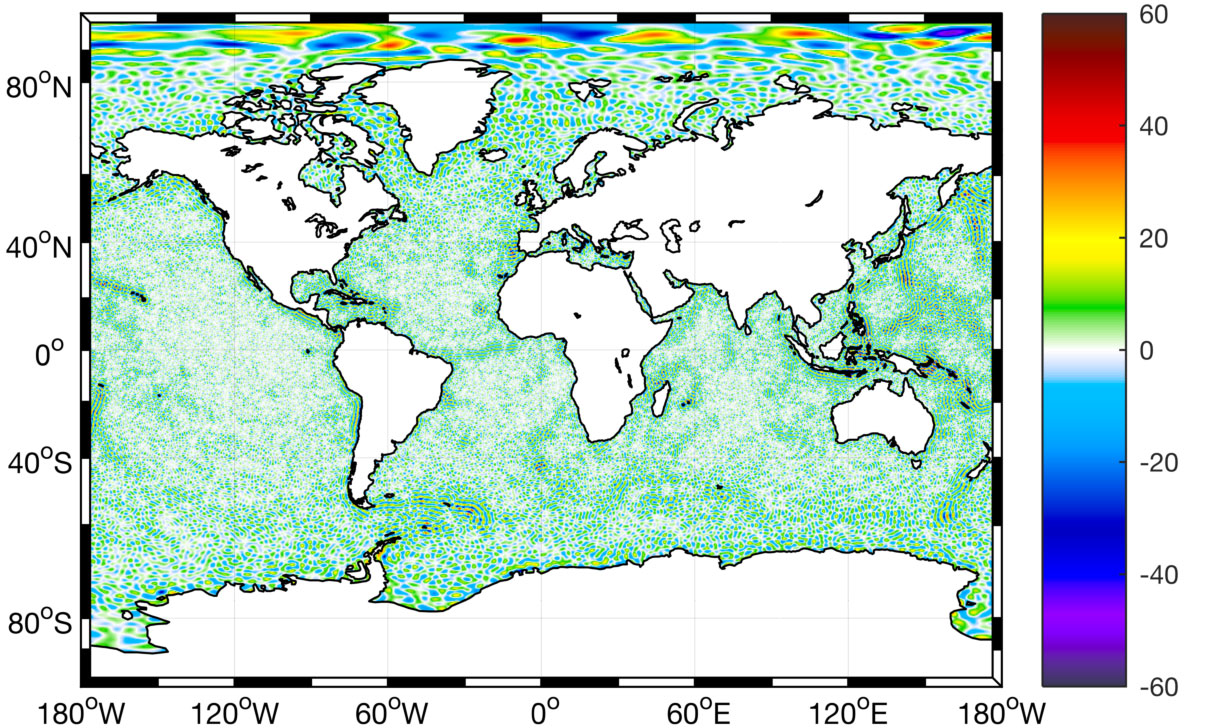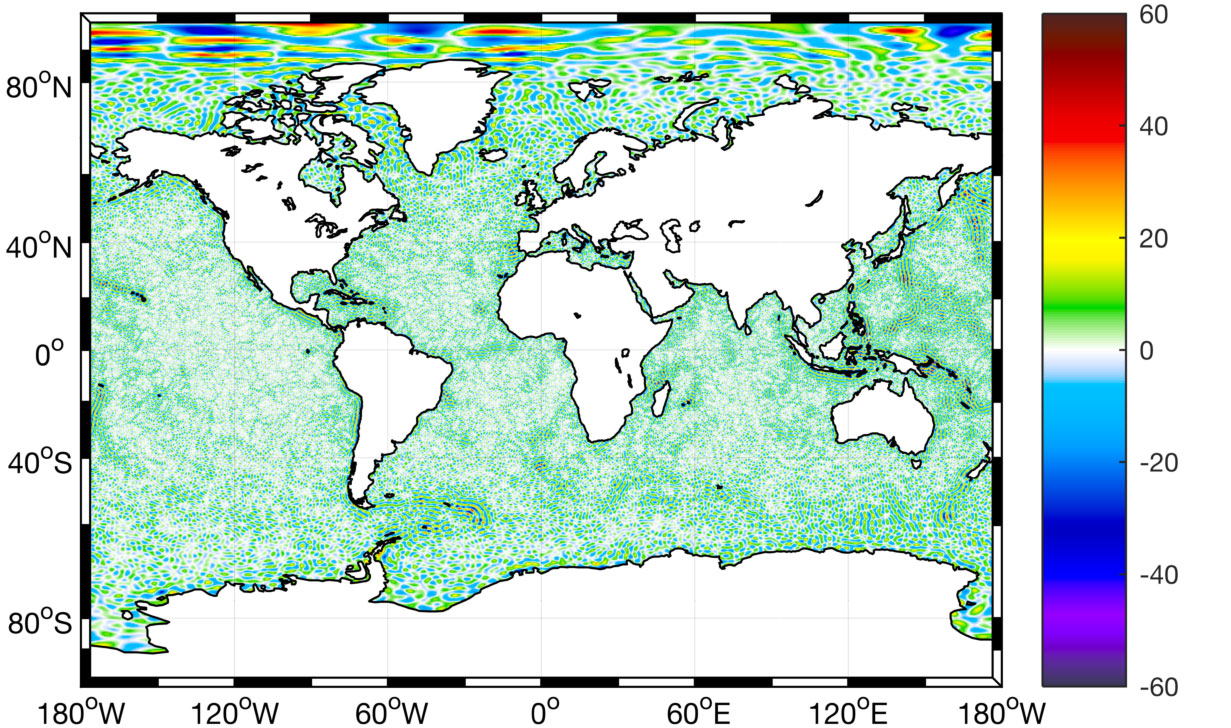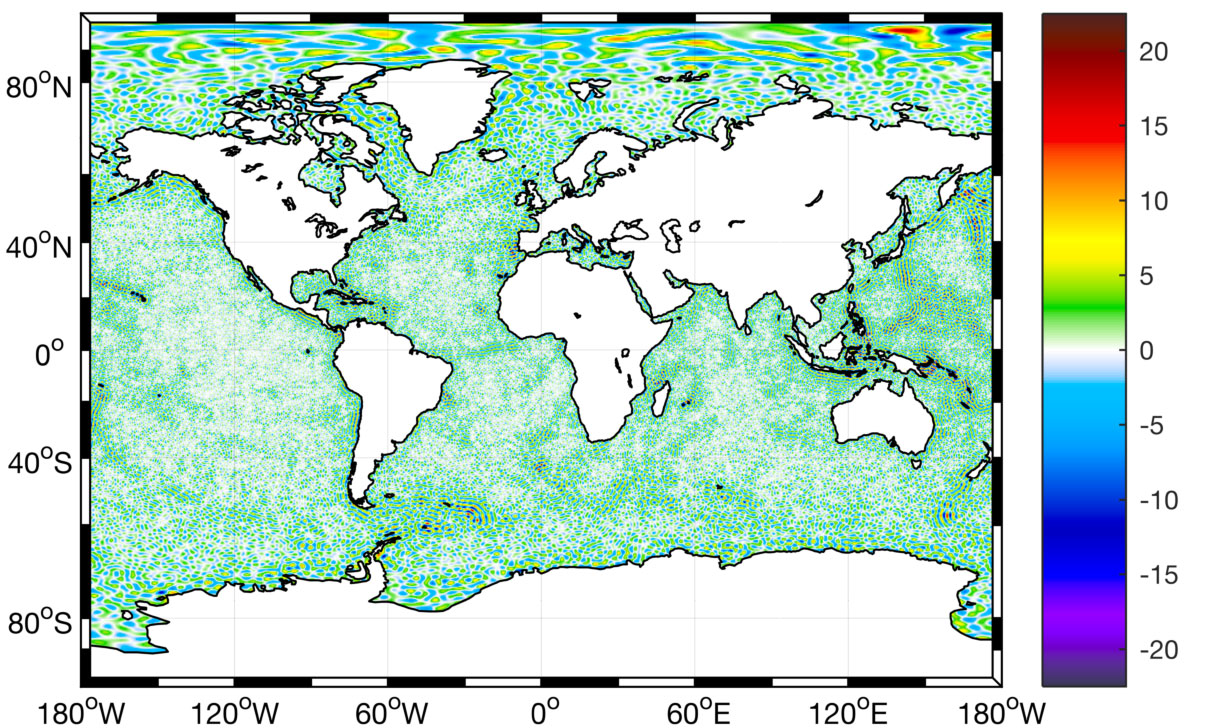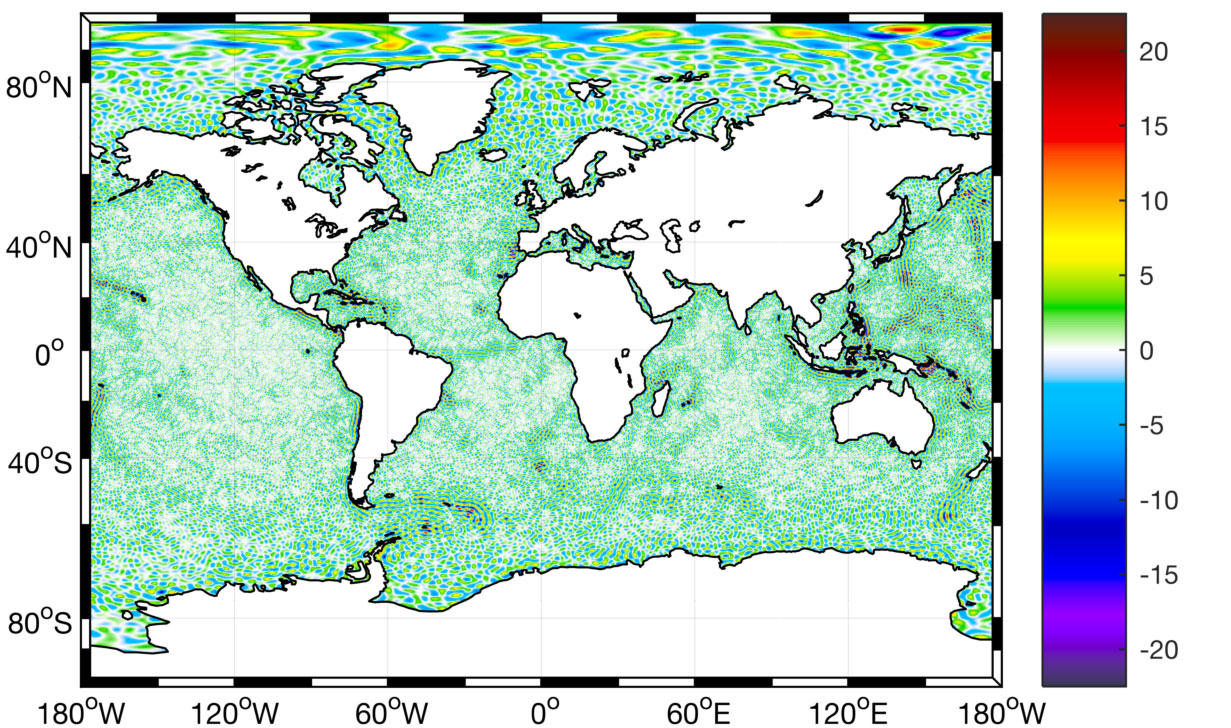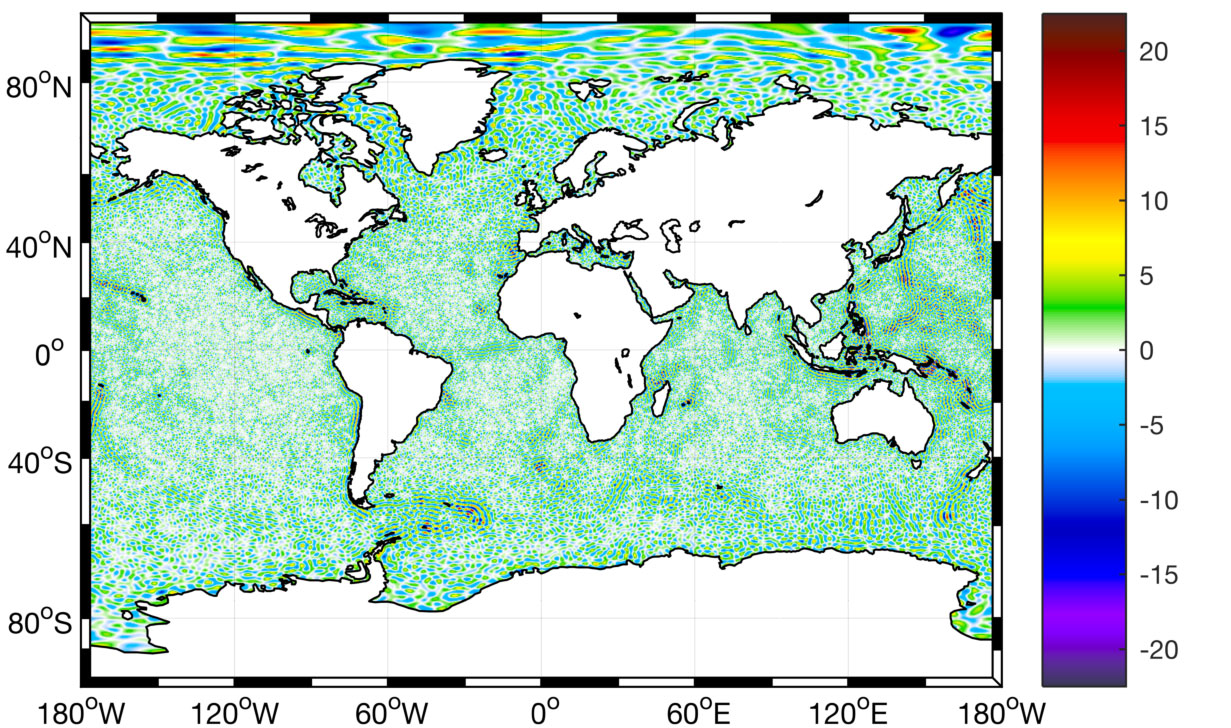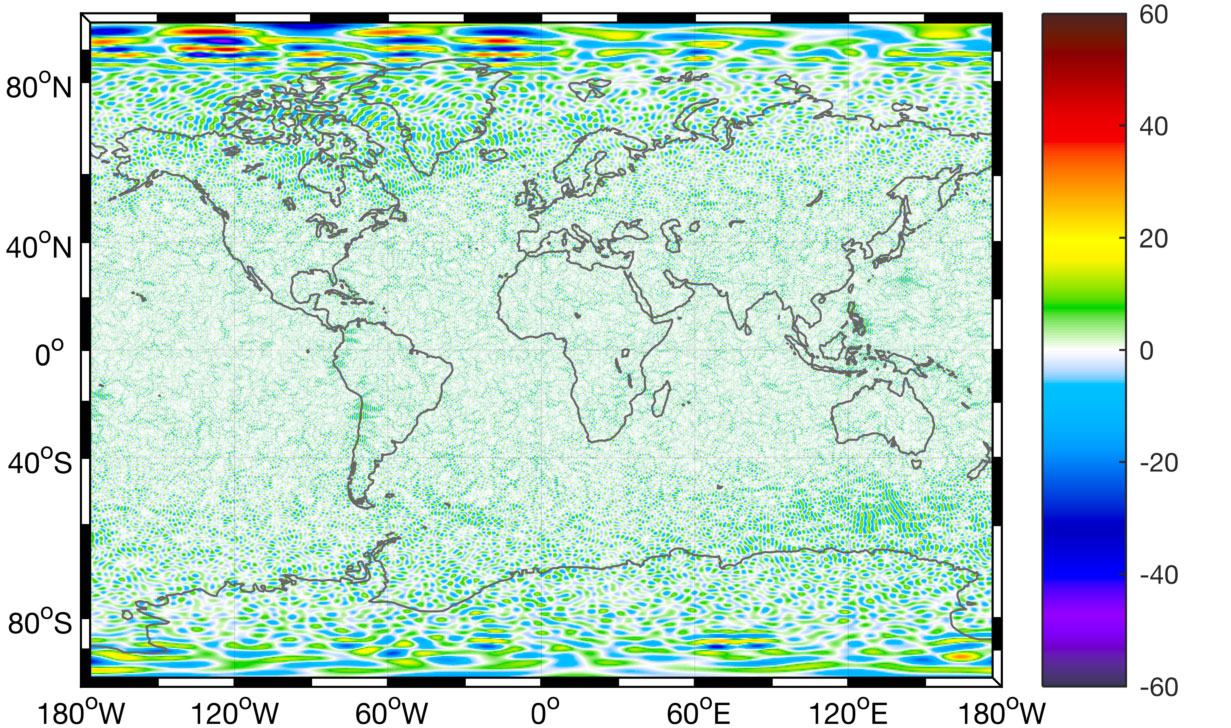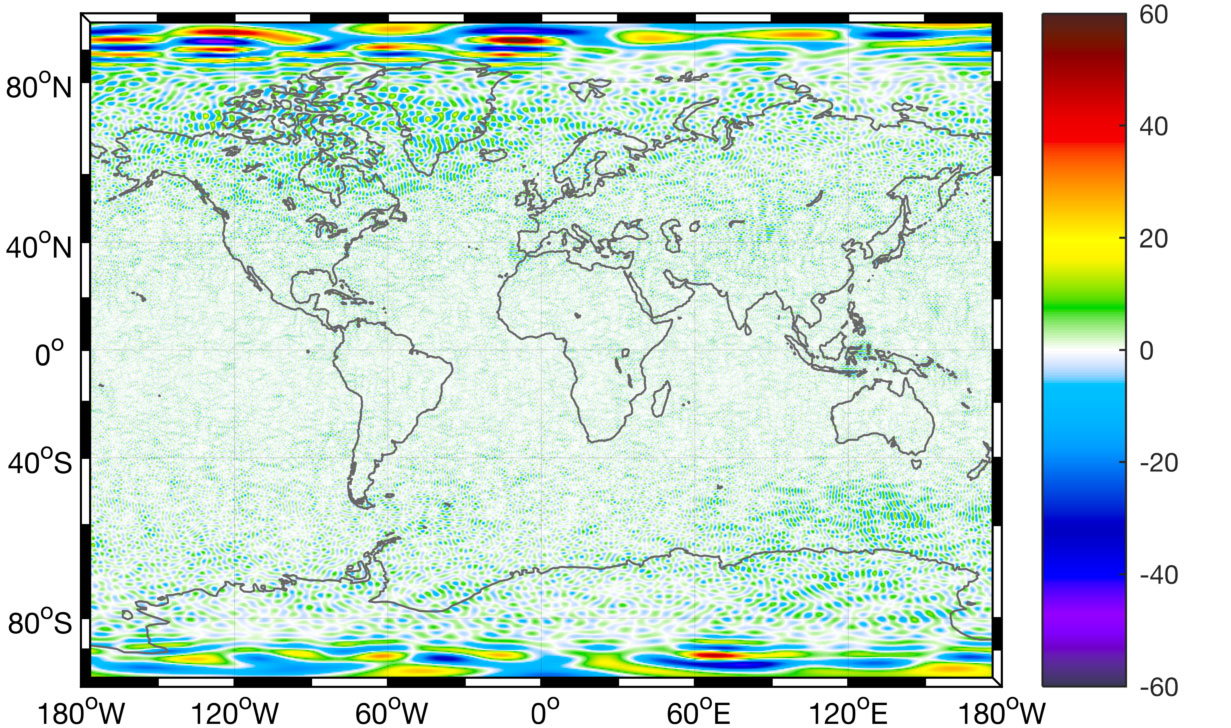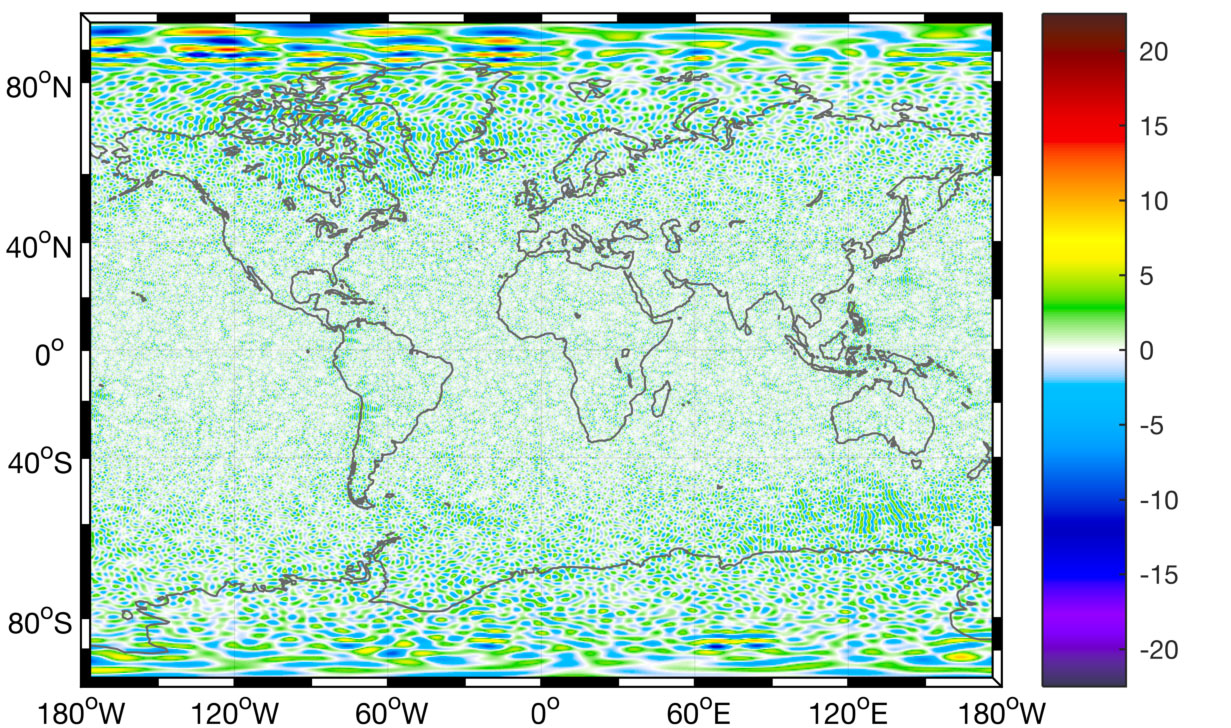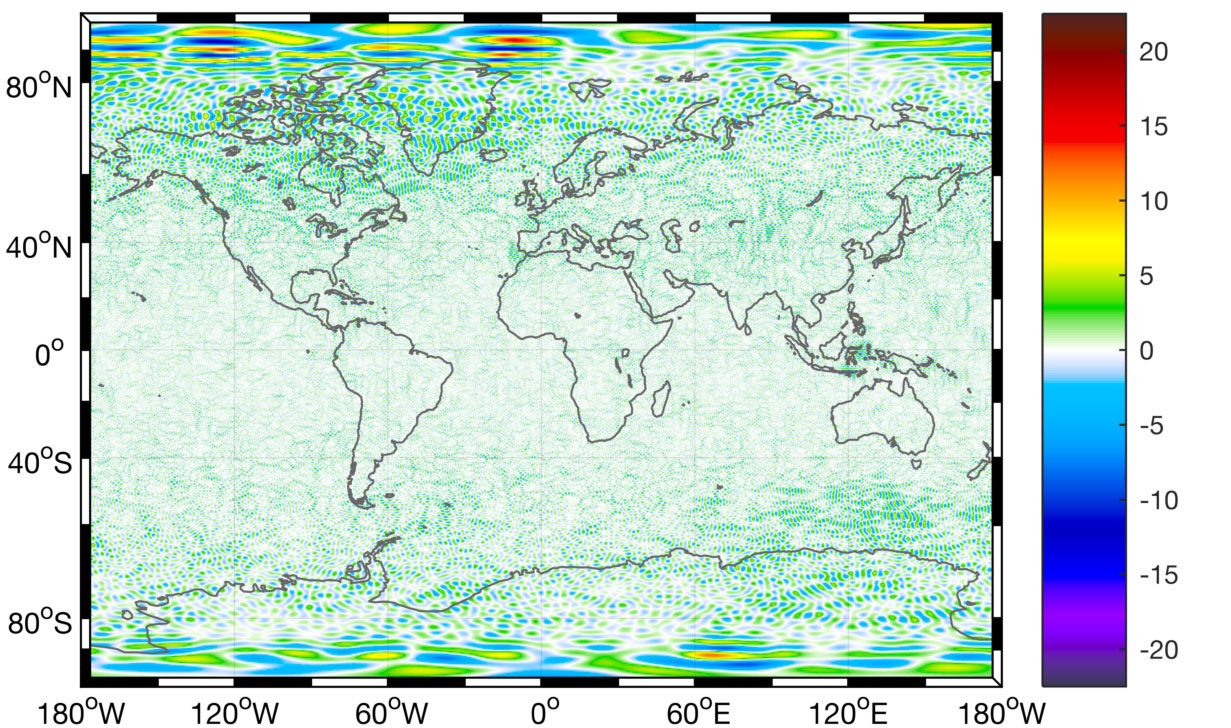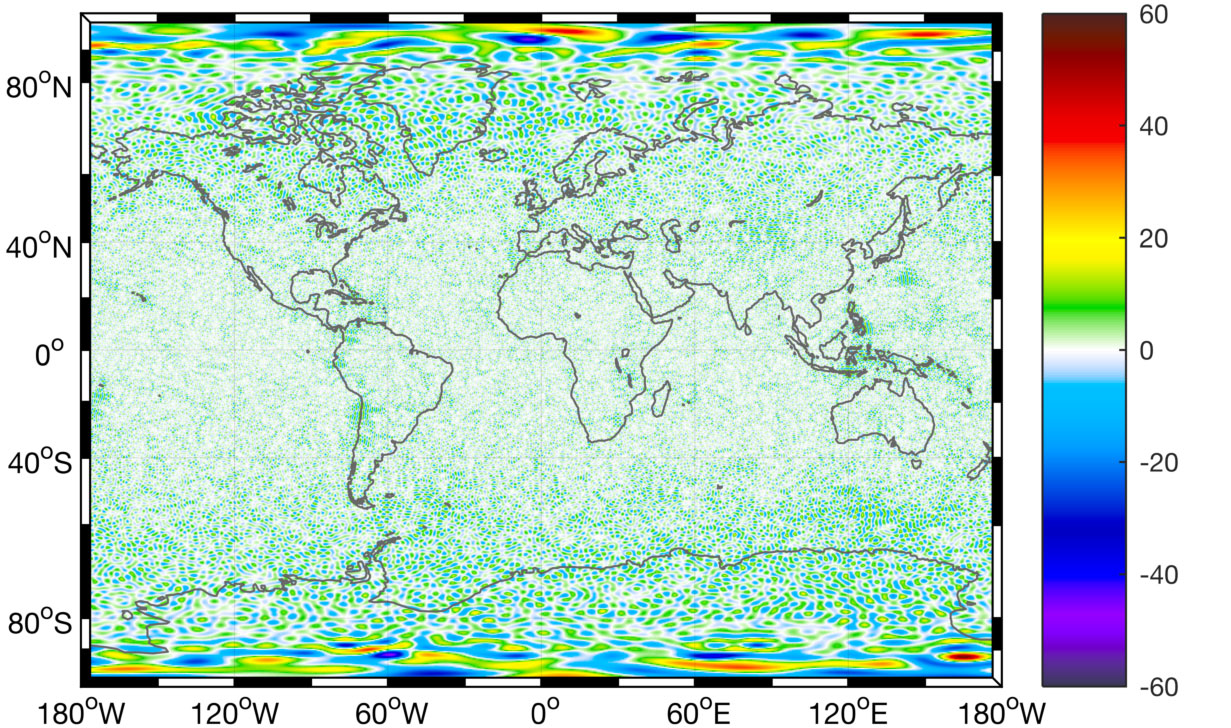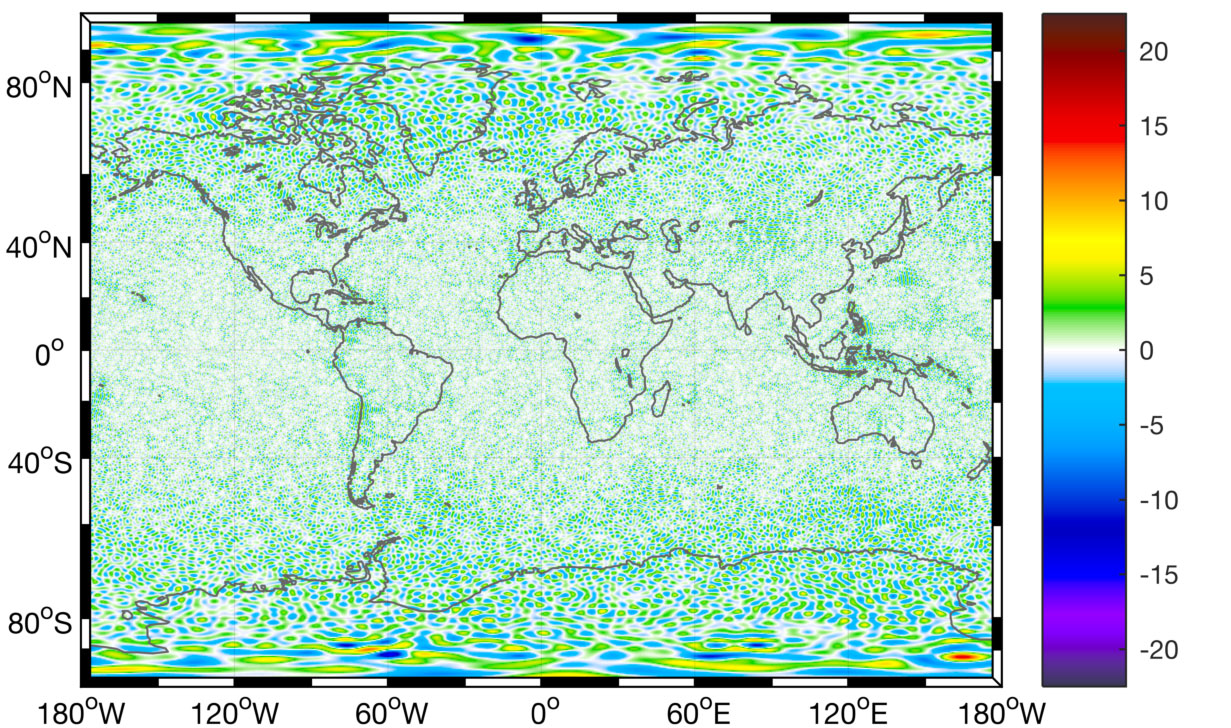GOCE gravity field products by means of the space-wise approach (release 5)
Evaluation of the ground grids
The space-wise approach is a method developed by Politecnico of Milan for the processing of the ESA-GOCE data. It is based on a gridding by least squares collocation (LSC) considering covariances locally adapted on the power of the gravity signal. The aim of the approach is to better extrapolate the local content of the GOCE data at the cost of a lower level of global regularisation.
Grids comparison at satellite altitude
Space-wise grids (SPWG) can be compared with grids synthesised by spherical harmonics models. We provides different comparison to demonstrate the apparent advantages (and disadvantages) of the space-wise solution. All the synthesis are computed at the maximum degree of 330, when a model is truncated at lower maximum degree coefficients are filled with zeros. Both the set of grids of Δg (spherical approximation) and Trr are computed @10Km above the WGS84 ellipsid.
The models used for the comparison are:
- Space-wise R5 (SPW): is the coefficient model as recovered by the analysis of the GOCE grids,
when synthesised it produces grids very similar to the original ones, but due to a global regularisation (based on Monte Carlo samples)
it is sliglty different: better globally but it is inevitably smoothing a very little part of the signal
at the very high frequencies. - Space-wise R5 combied (SPC): the space-wise model is combined with ITSG 2014S
(and EIGEN 6C4 for the very first 6 degrees) on the basis of coefficient variances obtained by
Monte Carlo samples (for GOCE spw R5) and formal errors (for ITSG 2014S). The combination overcome the weakness of the space-wise model in the low-frequencies and helps higlighting the
good performance at the very high degree in the comparison with other models. - Time-wise R5 (TIM): is an official model regularize by Kaula’s rule, it utilize GOCE only data of the full mission, this makes it the more similar model to the space-wise.
- Direct R5 (DIR): is an official model utilizing GOCE data (of the full mission), LAGEOS data (1985-2010) and GRACE data (2003-2012), it is regularised following Kaula’s rule.
- GOCO 05C: (GOCO) is an combined model of TIM R5, ITSG-GRACE2014S, additional orbit information from low-earth orbiting satellites (LEOs), satellite laser ranging (SLR), and terrestrial data.
- EIGEN 6C4 (EIGEN): is a combined model including data from the direct approach plus terrestrial data (max degree 370): DTU12 ocean geoid data and an EGM2008 geoid height grid for the continents.
- EGM2008: (EGM) is a combined model using various data sources, with no contribution from GOCE.
Internal comparison: space-wise grids vs space-wise global models
Here we look at the differences between the SPW harmonic model, and the grid product.
Comparison: differences with respect to GOCO 05C
Using GOCO 05C model as comparison we can test the quality of the high frequencies of the space-wise model, since the combinel model includes terrestrial data having the high frequencies closer to GOCO could be an index of goodness of the model.
Comparison: differences with respect to EIGEN 6C4
Comparison: differences with respect to EGM 2008
Comparison: differences with respect to Direct approach
Comparison: differences with respect to Time-Wise approach
← go back to the Space-wise GOCE products main page
